I want to create a before-and-after plot of the three axis of my measurement system. This is close to what I want. However:
- How do I have the "before" and "after" titles span subplot 1+2 and 4+5, respectively? (the tabs dont work as expected)
- Like "before" and "after" should be above a column, i would like to have the "x-Axis", "y-Axis" etc infront of the row of graphs. How do I do that?
- How do I join subplot 1+2 and 4+5 together, so that they touch? wspace=.0 doesnt work as expected.
- How do I reduce the width in the middle, where subplot 3 would be, so that the other sides can take up more space?
- How do I add some hspace between the fig.suptitle and the graphs?
- How can I make my code more elegant? There is a lot of repetition.
from matplotlib.pyplot import figure
def plot_before_and_after(data_before, data_after, title):
shape = data_before.shape
sensor_num = shape[0]
n_start = 20 # number picked at random
N = 2 ** 12 # power of two is good
n_stop = n_start + N
p_stop = n_start + 40 # one periode @50Hz at the sampling rate
x_long = range(n_start, n_stop)
x_short = range(n_start, p_stop)
cmap = plt.get_cmap('jet_r')
axis_list = ['x', 'y', 'z']
fig = figure(num=None, figsize=(10, 10), dpi=80, facecolor='w', edgecolor='k')
fig.suptitle(title + "\nbefore \t\t\t\t\tafter")
plots = []
for axis_cnt in range(0, 3):
ax0 = plt.subplot(3, 5, axis_cnt * 5 + 1,
title="before, {}-Axis".format(axis_list[axis_cnt]))
for sensor_cnt in range(0, sensor_num):
color = cmap(float(sensor_cnt) / sensor_num)
plt.plot(x_long, data_before[sensor_cnt, n_start:n_stop, axis_cnt], color=color,
label="sensor" + str(sensor_cnt))
ax1 = plt.subplot(3, 5, axis_cnt * 5 + 2,
title="before, {}-Axis".format(axis_list[axis_cnt]),
sharey=ax0)
for sensor_cnt in range(0, sensor_num):
color = cmap(float(sensor_cnt) / sensor_num)
plt.plot(x_short, data_before[sensor_cnt, n_start:p_stop, axis_cnt], color=color,
label="sensor" + str(sensor_cnt))
plt.setp(ax1.get_yticklabels(), visible=False)
ax3 = plt.subplot(3, 5, axis_cnt * 5 + 4,
title="after, {}-Axis".format(axis_list[axis_cnt]))
for sensor_cnt in range(0, sensor_num):
color = cmap(float(sensor_cnt) / sensor_num)
plt.plot(x_long, data_after[sensor_cnt, n_start:n_stop, axis_cnt], color=color,
label="sensor" + str(sensor_cnt))
ax4 = plt.subplot(3, 5, axis_cnt * 5 + 5,
title="after, {}-Axis".format(axis_list[axis_cnt]),sharey=ax3)
for sensor_cnt in range(0, sensor_num):
color = cmap(float(sensor_cnt) / sensor_num)
plt.plot(x_short, data_after[sensor_cnt, n_start:p_stop, axis_cnt], color=color,
label="sensor" + str(sensor_cnt))
plt.setp(ax4.get_yticklabels(), visible=False)
plt.subplots_adjust(wspace=.0)
plt.legend()
plt.show()

